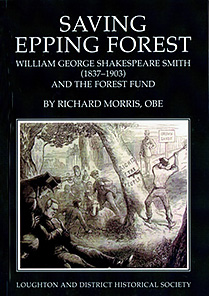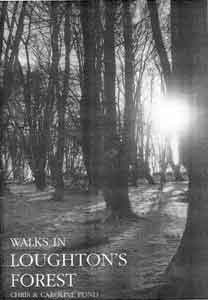Recent Books
THE HOLMHURST: PEACE AND PLENTY ON A LOUGHTON HILL 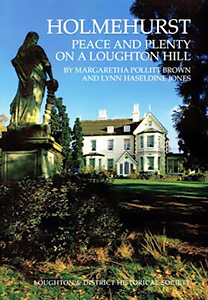
The beautifully designed property and estate called Holmehurst at Loughton, has a wealth of history and its owners and their families have made significant contributions to their local community. This book tells the story of Holmehurst’s first 100 years. ISBN 978–1–905269–35–8
THE LOUGHTON IDYLL As children, Rudyard Kipling, his sister, Trix, and cousin, Stanley Baldwin, spent the summer of 1877 in Loughton. They had the run of the open Forest and of Goldings Farm, owned by the avuncular John Dalley. The freedoms and friendships of the children’s stay were highly important in the development and future careers of the writer and of the Prime Minister; the Nobel laureate and the politician both remembered it with huge affection whenever they met as famous men years onward. ISBN 978–1–905269–34–1 £6.50
Loughton in the 1930's and 1940's
Loughton eighty or so years ago was a very different place, yet there is something essentially familiar about the scenes that Richard Gresty describes of his childhood in the 1930s. His text is accompanied by 30 illustrations, many of which have not appeared in print before. Together, they give a charming and first-hand impression of the Loughton of small shops, steam trains, and simple pleasures that is now passing completely out of memory.
ISBN 978–1–905269–30–3
SAVING EPPING FOREST: WILLIAM GEORGE SHAKESPEARE SMITH (1837–1903) The many histories and articles describing the fight to save Epping Forest from enclosure in the 1860s and 1870s, include references to W G S Smith, who in 1871 became the Hon. Secretary of The Forest Fund, and organised the protest meetings throughout East London, the Forest and in the City of London over the following seven years. We are fortunate that Smith kept two scrapbooks recording events between 1867 and 1882. The scrapbooks show how efficient Smith, a solicitor by profession, and his colleagues were in keeping the public informed with regard to events, inviting both local and national newspapers to visit the Forest to see both its beauty and the problem of enclosures, and liaising with the Commons Preservation Society in promoting the objectives of The Forest Fund in Parliament. The book is extensively illustrated in both black and white and colour. ISBN 978–1–905269–29–7
LOUGHTON AIR PARK – ABRIDGE AERODROME This is the story of a little-known and now long-gone aerodrome in the south-west corner of the county of Essex. During its brief life in the 1930s, Loughton Air Park was a hive of activity and the location for many ‘flying circus’ air displays. From the aerodrome, scheduled services were projected to ‘all other parts of the world’, and three flying clubs taught hundreds of people to fly there, including the ‘flying busmen’. Teachers included the country’s only one-legged flying instructor, and another who was later to disappear in a crash in the English Channel. Among their pupils were a ‘society girl’ parachutist, who went on to become a glider pilot of international renown; and Britain’s youngest female pilot, subsequently awarded the MBE for her wartime flying activities. It was also the location of the King of the Gold Coast’s first flight in an aeroplane. The aerodrome had a darker side too, its final year seeing the tragic deaths of two young airmen, and ending its days as the scene of a thwarted smuggling attempt involving some of the decade’s most notorious confidence-tricksters. ISBN978–1–905269–25–9 THE GOLDEN AGE OF BUCKHURST HILL by Lynn Haseldine Jones Pictures of this well-heeled suburb, particularly in Edwardian times, taken from the postcards that were the e-mails or Instagrams of the age, arranging for business meetings, giving birthday greetings, setting up assignations, demanding deliveries of dog biscuits and all the minutiae of life. The people who sent the cards had little inkling that more than a hundred years on, Lynn Haseldine Jones would be able to compile such a comprehensive record of Buckhurst Hill as it once was from their halfpenny correspondence. ISBN 978–1 905269–23–5 £6.25
THE CHARTER OF THE FOREST 1217 Magna Carta (‘The Great Charter) of 1215) contained two clauses relating to forests, but many promises made during the negotiations concerning the extent of the forests and the harsh forest laws were omitted. ISBN 978–1–905269–22–8, CLUES IN FICTION: AN ESSEX COUPLE’S SECRET TIES A remarkable group of artists and scientists lived at Loughton in the pre-1914 period. With extra sources becoming available, it has been possible to piece together the stories of more and more of these figures, and how they interacted. In this book, Imogen Gray researches the lives of Horace Newte and Vera Keen, a singular literary couple who lived most of their brief married life at Upminster, Theydon Bois, and Loughton. Though Horace is now mostly overlooked, he was a very widely read novelist in his time, and, after his marriage ended in a sensational divorce, developed into an acerbic, not to say cantankerous, popular newspaper columnist. ISBN 978–1–905269–21–1
A HISTORY OF ST NICHOLAS’ CHURCH, LOUGHTON, ESSEX This short history of the church of St Nicholas from its beginnings in the 12th century to the Memorial Chapel built in 1877, seeks to put together in one volume the story of the church and churchyard, and to add some biographical details of the people who contributed much to the history of the village and town of Loughton. The Stonnard, Wroth and Maitland families each possessed the manor of Loughton for considerable periods. In the case of the Stonnards and the Maitlands, several members of the families are buried in the churchyard. With the departure of the Maitlands from Loughton Hall in 1946, the chapel was renovated and St Nicholas became a ‘daughter church’ of St John’s for public worship. ISBN 978-1-905269-20-4
LOUGHTON AND ITS TREES:  COMMUNITY TREE STRATEGY FOR LOUGHTON (2013) by Tricia Moxey A 104 page, full-colour account of the trees of Loughton, their history, and what they contribute to the town, as well as a management plan to conserve and enhance them for future generations. ISBN 978–1–905269–18–1
WILLIAM D’OYLEY1812–1890: In the fight to save Epping Forest from enclosure, the City of London Corporation had by 1876 purchased 2,750 acres of forest from the local lords of the manor. The Corporation decided to appoint a Superintendent to take charge of the land, and appointed William D’Oyley, a land surveyor who had lived in Loughton since 1854. William D’Oyley was Superintendent for only three years but he used his professional skills to create new paths through the Forest and to drain swampy areas, so that by the time of the Epping Act of 1878, the obligation to conserve the Forest for the recreation and enjoyment of the people was beginning to be realised. D’Oyley came from a family of land surveyors, who were all known for the many detailed maps and plans of the Forest and south-west Essex that they compiled , and which are today in the collection of the London Metropolitan Archives. The book is illustrated in colour, including some of D’Oyley’s maps. ISBN 978–1–905269–19–8 FOREST FOR THE PEOPLE George Burney,an iron-tank manufacturer from Millwall on the Isle of Dogs in East London, achieved some notoriety in the 1870s, in the fight to save Epping Forest from enclosure, when he organised the pulling down of fences on pieces of forest land which he believed had been illegally enclosed. His involvement in helping to save the Forest was, however, much greater than just pulling down fences. This monograph seeks to explain his wider activities in this respect, and to give some background to his family and business in east London. Burney & Company Ltd became known internationally for its iron products and was sole supplier of iron water tanks to the Royal Navy. ISBN 978–1–905269–16–7 GRAND COMMUTERS:BUCKHURST HILL AND ITS LEADING FAMILIES Very little has been written about Buckhurst Hill for the best part of 50 years. From time to time, articles have appeared in the LDHS Newsletter and in local papers, but this is the first time the LDHS has been able to offer to residents a substantial volume on any aspect of its history. Lynn Haseldine Jones has spent some years researching the families who effectively ran Buckhurst Hill. They were major employers in the town, they were influential in politics and religion locally, and their influence can be discerned even today. For the most part, their ample houses have disappeared, to be replaced, particularly in the 1960s and 70s, by smaller ‘executive residences’ and blocks of flats. But their names live on, and Lynn in this book has documented something of them and of what they left to Buckhurst Hill. We owe her much for filling in this gap in our local history. RRP - £4.50 ISBN 978-1-905269-17-4 A CENTURY AND A HALF OF LOUGHTON IN PICTURES ‘This book will be a worthy addition to bookshelves both locally and far and wide.’ RRP - £12.50 ISBN 978–1–905269–15–0
THE BUILDINGS OF LOUGHTON& Notable People of the Town (2010) RRP - £7.50
THE LIFE AND ART OF OCTAVIUS DIXIE DEACON OCTAVIUS DEACON was an advertising agent, publisher, and amateur artist who was born in Bow, and lived in Hackney and Loughton for much of his life. After one of his last descendants died in Surrey a decade ago, albums of watercolours and drawings of places near his homes and further afield, painted by Octavius Deacon, were put up for auction. This book presents a selection of 47 Deacon paintings and sketches from those albums – a charming, whimsical, and evocative picture of village and London life 120 and more years ago. The authors have researched Deacon fully and explored his writings, so as to present a biography of this singular – and rather cantankerous – artist, as well as to describe and explain the places he drew, and their inhabitants as he saw them. RRP - £7.50 ISBN 978–1–9052–6913–6 ARTHUR MORRISON – THE NOVELIST OF REALISM IN EAST LONDON AND ESSEX ARTHUR MORRISON is sometimes styled the English Zola. He was a journalist and general-purpose writer who developed a genre quite unlike that of his contemporaries in Britain. His setting consisted of the dingy and poverty-ridden streets of inner East London in the late nineteenth century, to which the contrast applied was the sylvan retreat of the Essex Forest, not a dozen miles away. The descriptions of the Forest Morrison offers are as beautiful and elegiac as anything in literature, and serve to offset and throw into focus the profound physical and mental destitution of east London. RRP £4.50 ISBN: 1–978–1–905269–10–5 Dr Fred Stoker and the Lost Garden of Loughton
Fred Stoker was a surgeon, who came to live in Loughton about 1920. He first lived at Oak Lodge (later No 56) Baldwins Hill, but subsequently purchased an adjoining plot of land of almost five acres in the apex between Baldwins Hill and Goldings Hill, with the Potato Ground allotments as the southern boundary. Here he built a house which he called The Summit, and over the following 15–20 years he and his wife, Mary, developed a garden that became known nationally and internationally. Dr Stoker died in July 1943, but his wife continued to live at The Summit until her death in 1964. The land was sold in 1971 and an estate of 41 houses built. However, tree preservation orders were imposed on many of the large trees in the garden and it is still possible to identify some of them.
RRP £3.00 ISBN: 1–905269–09–9 Essex’s Excellency: The Election of two Knights of the Shire for the County of Essex at the General Election of August 1679. This booklet describes events at Chelmsford in August 1679 during the election to Parliament of two Essex knights of the shire. These events provide an insight into post-restoration politics and religion in England and the disorder at the election contest was by no means unique. The three elections were carried out in a crescendo of excitement and reflected principally the religious dissension of the day and also disenchantment with corruption in Parliament. The period saw the beginning of political parties and election contests as we know them.
RRP £4.00 ISBN 13–978–1–905269–08–2 MERCHANTS, MEDICINE AND TRAFALGAR: THE HISTORY OF THE HARVEY FAMILY Thomas and Joanne Harvey’s seven sons were all born in the first Elizabethan era. Five of the sons followed in their father’s footsteps and became successful merchants in the City of London trading in silks and spices, principally with the Levant. The profits from the business were used to purchase land and houses in several counties in southern England, at which succeeding generations enjoyed their leisure pastimes. PDF with illustrations and more about this book. Out of print and no longer available. POST-WAR LOUGHTON 1945 - 1970 ISBN 1 905269 05 6 The Loughton Railway 150 Years On by CHRIS POND, IAN STRUGNELL & TED MARTIN (2006) In August 1856 the Eastern Counties Railway opened a branch railway to Loughton in rural Essex. Over 150 years this developed into the Underground line we know today. This book, published to mark the anniversary, is an anthology of various aspects of the railway’s past, and its effects on Loughton. ISBN 1 905269 04 8 Lady Mary
Wroth Lady Mary Wroth is one of those figures Loughton figures who is often mentioned in the history of the town, but about whom relatively little is known. She is nevertheless a notable figure in English literature, one of first women authors in our language, the first female author of a sonnet sequence. Modern commentators have given serious attention to Lady Wroth as a significant writer. She was also the first of a significant number of Loughton based authors. Her connections in the courtly circles of Jacobean society were wide. Sue Taylor has taken the opportunity here to record and distill what is known about Lady Mary Wroth from a range of of sources and in doing so, she adds significantly to our knowledge of this early Loughton writer. The RRP is £2.50. ISBN 0954 2314 81
Maynard's Concise History of Epping Forest 1860  EDITED by RICHARD MORRIS OBE (2005) This booklet originally published at Theydon Bois in 1860 by the author, has been reset and reprinted as the first history of Epping Forest and the first counterblast in print against the arguments of those who wanted disafforestation and enclosure at that time. Hardly any of the original copies have survived and photostat copies produced by Brian Page, Hon Editor of the Wanstead Historical Society Journal, are no longer available. A new preface and a life of the author have been added to explain the background to this fascinating historical document which is of particular interest to Essex historians and all lovers of Epping Forest. ISBN 1905-2690-13 The Harveys of Rolls Park, Chigwell, Essex  by RICHARD MORRIS OBE (2004) The Harvey family came to live at Rolls Park, Chigwell
in the middle of the 17th century. Several members of the family
established themselves as merchants in the City of London, trading
mainly with Turkey and the Levant. Others members achieved success
as lawyers, in government service and in military careers. A paperback book with 12 pages of plates, 8 of which are in colour. Out of Print. (see publications). The Verderers and Courts of Waltham Forest in the County of Essex 1250-2000 (2004) by RICHARD MORRIS OBE A NEW HISTORY of the Royal Hunting Forest in Essex from medieval times to the present day. Epping Forest is the remaining fragment of Waltham Forest, which for over 700 years was one of the royal hunting forests of England, where the monarch had the exclusive right to hunt deer. Even earlier, Waltham Forest had formed part of the Forest of Essex which covered most of the county. The book explains the judicial system of Forest courts which existed until the middle of the 19th century, presided over by the Verderers, before which offenders against the Forest laws were brought. The Verderers were often well known landowners, merchants, lawyers and military men in the county, and included representatives from the Stonards and Wroths of Loughton, the Harveys of Chigwell, the Conyers of Copped Hall, the Hervey Mildmays of Dagenham, and the Fanshawes and Gascoynes of Barking. The role of the Verderers changed with the passing of the Epping Forest Act of 1878, when the Corporation of London became Conservators. The Verderers no longer had any judicial authority, but their influence on the management of the Forest was still significant. The Buxtons, Sir Antonio Brady, Andrew Johnston, Sir William Addison and others have, in the past 125 years defended the Forest against encroachment and the effects of surrounding urbanisation. The hardback book is over 200pages and has an additional16 pages of colour plates and many black and white illustrations, together with a comprehensive index. The RRP is £14.95, with the usual discounts for bookshops, libraries, schools and universities. ISBN 0954 231465 Only a few copies remain. Please email. LIFE IN LOUGHTON 1926 - 1946  By Peter Woodhouse (2003, Reprinted 2014) Loughton between the wars was changing. The leaders of the community envisaged a time when all its open land other than the Forest would be built over. But for those who came to live in Loughton, it was still an open, semi-rural, middle-class place, mostly village, only part suburb. In this book, Peter Woodhouse tells the story of that Loughton of private schools, tennis clubs, steam trains, pirate buses, and dancing lessons, the Loughton of the 1920s and 30s; a charming cameo of Loughton life in the past. £5.00 ISBN 0954 231457 2014 Reprint now available
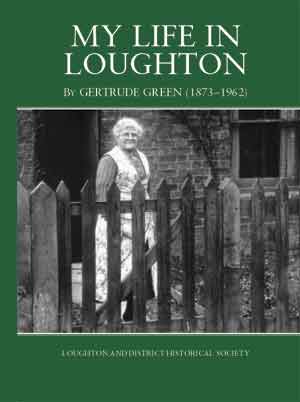 My
LIFE IN LOUGHTON (1873 - 1962) My
LIFE IN LOUGHTON (1873 - 1962)By Gertude Green (2004) Gertrude Green wrote her 'notes' in longhand on scraps of paper
and bits of Here is that rarest of documents, a complete biography and family
history of Here, then, is an account of Loughton life, not 50 or 75 years
ago, but up ISBN 0954 2314 7 3 Out of Print.  The
Powells in Essex and their London Ancestors by
Richard Morris. (October 2002) The
Powells in Essex and their London Ancestors by
Richard Morris. (October 2002)
The story of the philanthropists and antiquaries who came to live in Hackney, Tottenham, Walthamstow, Loughton and Buckhurst Hill in the nineteenth century. Hardbound book with 16 pages of colour plates. £9.50 ISBN 0954 231422 Only a few copies remain. Please email.
|
|
|
Short Epping Forest walks in and around Loughton ISBN 1 905269 01 3
Loughton a Hundred Years Ago By William Chapman Waller Edited by Richard Morris and Chris Pond (2006 edition) The Loughton & District Historical Society has recently published the full text of William Chapman Waller's Itinerary of Loughton, written between 1905-1912. This follows publication earlier in 2001of a biography of Waller by Richard Morris. 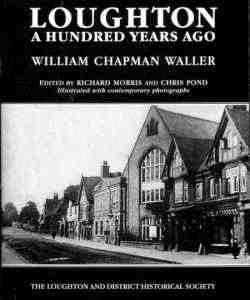 William Waller lived in Loughton from 1874 to 1917 and spent much
of his time researching and writing about the history of Loughton
and Essex. He was one of the leading county historians of his time.
William Waller lived in Loughton from 1874 to 1917 and spent much
of his time researching and writing about the history of Loughton
and Essex. He was one of the leading county historians of his time.
In the new book, edited by Chris Pond and Richard Morris, Waller combines a description of the old buildings of Loughton and their history, with an almost gossipy look at the people who lived in the town in the late Victorian and Edwardian eras. There is also a mass of interesting miscellaneous detail that comes from the Itinerary, from the man who invented penny-in-the-slot gas machines, to the lady who carried her bantam cock around as a pet. Some of the people described by Waller can be found in caricature in the collection of drawings and paintings by Octavius Dixie Deacon, now in the Epping Forest District Museum. Waller understood that a record of Loughton as he knew it would be as important for the future as were the court rolls and forest records he used for his research into earlier centuries.That is why, he says, he started the Itinerary, hoping that it would be useful to some yet unborn historian of Loughton. In fact the manuscript of the Itinerary was lost to the town for 83 years because it descended with Waller's family, who fortunately preserved it, and have now given permission for its publication. Many of the houses Waller describes have since been demolished, and some have been converted to other uses. The editors have chosen 20 photographs of Edwardian Loughton, some hitherto unpublished, to complement this unique record. 'Loughton a Hundred Years Ago', can be obtained from: The Loughton & District Historical Society Forest Villa, 7 Staples Road, Loughton, Essex. IG10 1HP and at local bookshops, price £5.50. ISBN 1 90526903X Notes on Loughton II: 1896-1914 By William Chapman Waller Edited by Richard Morris The Loughton & District Historical Society has recently published a transcript of William Waller's Notebooks covering the period 1896 -1914, in which he describes events that took place in the 'village' and the people involved. They provide an insight into life in Loughton during the early part of the twentieth century. 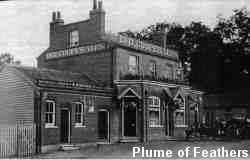 The forest, some of the larger houses and the people living in them,
and local industries are all subjects covered by Waller.
The forest, some of the larger houses and the people living in them,
and local industries are all subjects covered by Waller.In 1896 Harold Baring, a member of the family that owned the late lamented Bank, gave a party at Wallsgrove House, High Beach. Waller is critical of the extravagance. In 1901 there were only six motors cars in Loughton. Waller names the owners and wonders how many there will be in the future! Also in 1901 a new local newspaper, The Gazette, was first published: 'well printed on good paper'. Will it survive, he asks? The coming of the telephone to Loughton in November 1906 is mentioned, but Waller does not like the posts and wires and doubts if they will be put underground when they leave the High Road. The telephone company offered him a line for £5 per year. The Maitland v Matland court case is recounted, in which Blanche Maitland sued for damages after she was knocked down in the High Road by a horse and trap that bolted after being frightened by a 'steam lorry'. The plaintiff lost and Waller thinks that too high damages were sought and too much evidence was tendered. The publication completes the quartet of books on Loughton's famous Victorian Historian. The biography of William Waller by Richard Morris; 'Loughton a Hundred Years Ago' edited by Chris Pond and Richard Morris; together with the two booklets of Waller's Notes on Loughton; are all available from the Loughton Bookshop, 150 High Road, Loughton, or from the Historical Society. £2.00 ISBN 0952 880598
|
Contact for more information:
Dr Chris Pond
Forest Villa
Staples Road
Loughton
Essex
IG10 1HPTel: 020 8508 2361
E-mail: [email protected]



